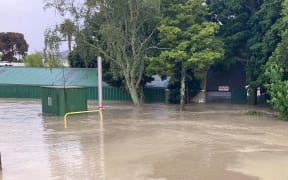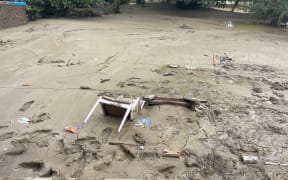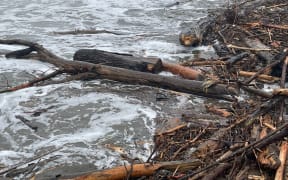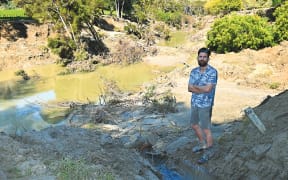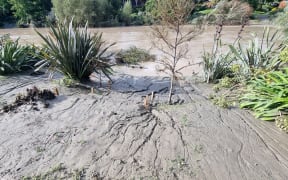
Robyn Wilkie, pictured in front of a slash pile on the Waimatā River, has been doing conservation work in the area for 20 years. Photo: Paul Rickard / Gisborne Herald
A Gisborne environmentalist who has spent 20 years trying to improve the state of a local river says her efforts have been decimated by the impact of Cyclone Gabrielle.
But Robyn Wilkie is vowing to continue planting trees on the banks of the Waimatā River, despite feeling "a little bit defeated" by recent flooding.
As a result of the two cyclones this year, much of the Waimatā River has widened, with dropouts and loose logs a common sight down its 20-kilometre length.
Wilkie is a founding member of the Waimatā River Catchment Group and estimates about 7000 trees have been planted on the river's banks in the past two years, with one goal in mind - to stop erosion.
She has also taken it upon herself to plant a number of trees and shrubs on a 500-metre stretch of council-owned riverbank near her home.
Of everything that has been put in the ground, only a small number of harakeke (flax) and mānuka remain.

While Gisborne city residents might be more familiar with the part of the Waimatā River that runs alongside Riverside Road, Wilkie and her husband Steve Sawyer live well upstream, in Waimatā Valley Road.
The river's once clear waters which have declined in recent decades reached new muddy heights following Cyclone Hale and Cyclone Gabrielle.
Wilkie said despite the best efforts of the catchment group and others to heal the river, intervention was now required on a central government level.
"Independent projects are not protecting the waterways. My big thought is that the whole catchment and all of these waterways need to be protected as one," Wilkie said.
"The social side of it is that our kids lived in that river. My son's 22 now and he went down there last summer and said 'I can't swim in it'."
Wilkie was philosophical about the fact the Waimatā would have flooded this year regardless of forestry slash, but said whole logs careening down the waterways have served as "bulldozers".
"We can't not do something. This is our problem. This has been created through bad industry.
"They're not even waterways anymore, they're slashways."
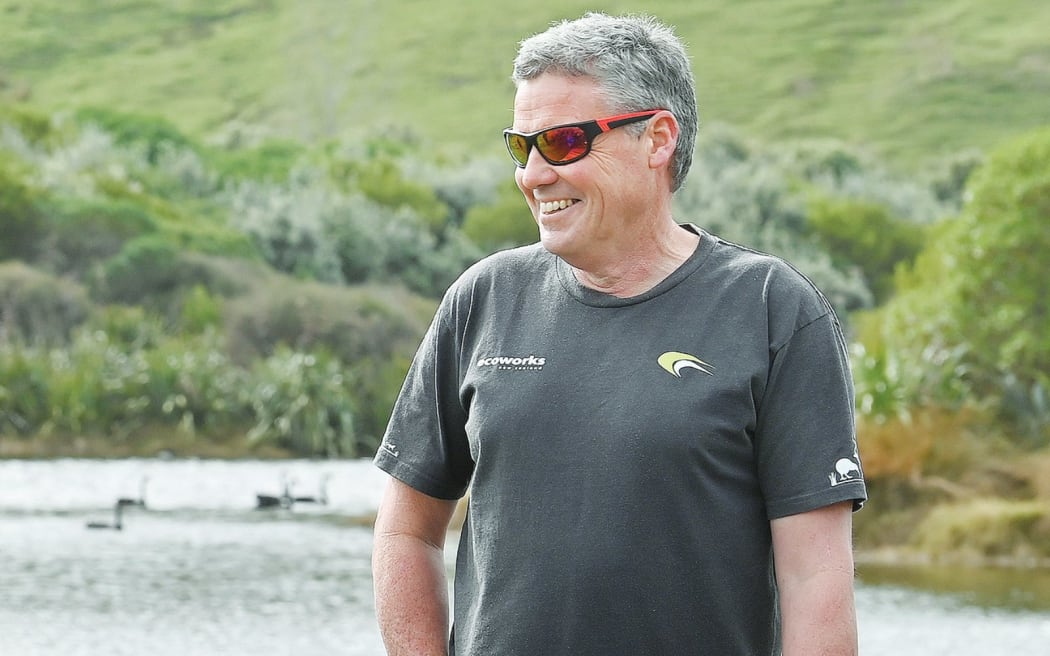
Waimatā Valley Road resident Steve Sawyer, who has been monitoring the local long-tailed bat population since 2018, has noticed numbers are low in the Waimatā River, and links it to the state of river. Photo: Liam Clayton / Gisborne Herald
Steve Sawyer is also involved in conservation work on the Waimatā River, and closely monitors the local long-tailed bat population using technology which picks up their ultrasonic click.
The bat was classified by the Department of Conservation as threatened at a critical level nationally, and Sawyer said his machines in the Waimatā area were only picking up on one "pass" per hour compared to more than 10 for the same period of time in Mōtū, about an hour northwest of Gisborne.
He put the low numbers down to the worsening state of the river, which was having a direct impact on the mammal's population by affecting the food supply.
Long-tailed bats rely on macroinvertebrates such as stoneflies and mayflies for food, which in turn rely on clean, stony-bottom streams to survive.
But with the Waimatā River now filled with silt, those small insects were increasingly rare.
Other concerns include the overall loss of riparian vegetation, which impacts the roosting habitat of the bats.
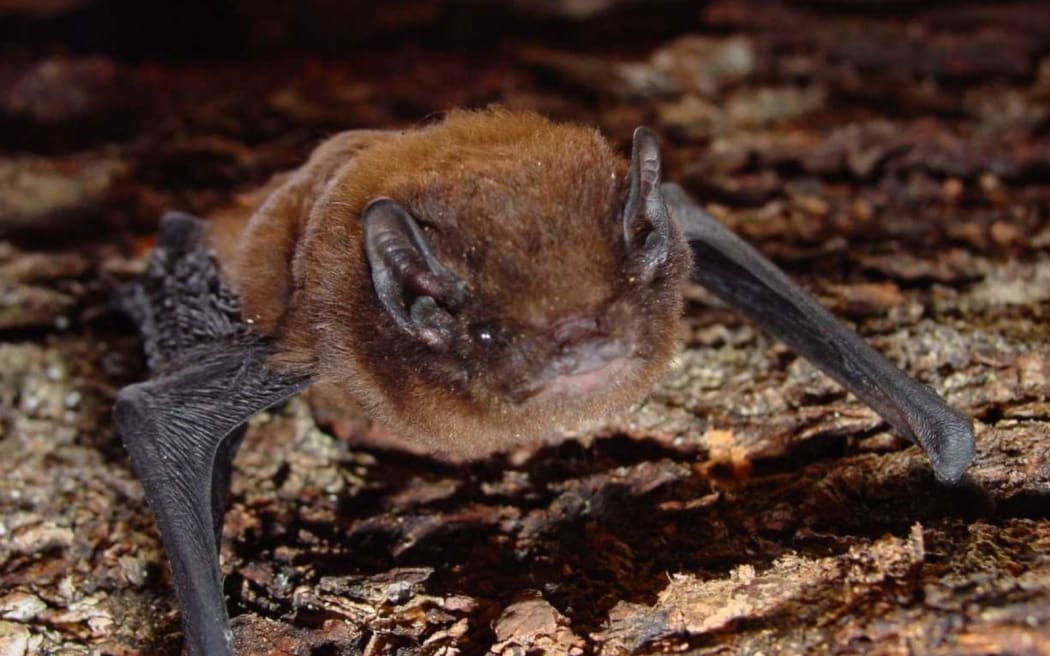
Numbers of the long-tail bat, or pekapeka, are down in the Waimatā Valley, according to a resident who monitors them. Photo: Colin O’Donnell / Supplied
"They [the long-tailed bat] would be the rarest or most endangered species left in our region. They're found on most of our East Coast rivers, but they rely on reasonably good habitat," Sawyer said.
The state of the river was also bad news for filter feeders such as the freshwater mussel kākahi, he said, which as a juvenile latched on to the gills of whitebait to transport upstream.
"The repeated, ongoing damage that occurs from these disasters not only takes out the ecosystem for biodiversity, but has a direct impact on our communities as well.
"The depth of ecosystem impact is massive."
Local Democracy Reporting is Public Interest Journalism funded through NZ On Air
